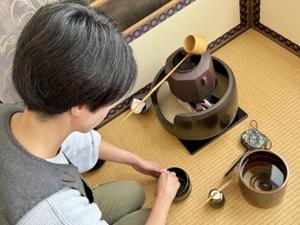The rising global appetite for matcha has led to significant price increases for the popular powdered tea. In 2023, demand for matcha surged, driven by consumer interest in its perceived health benefits and the growing popularity of matcha-based beverages, such as lattes. As a result, prices have climbed steeply, impacting both consumers and retailers across various markets.
The tea industry has seen a notable shift in consumer preferences, with matcha emerging as a favored choice among health-conscious individuals. According to market analysts, the global matcha market is projected to grow by approximately $4.5 billion between 2023 and 2029. This surge is largely attributed to the tea’s high antioxidant content and potential health advantages, which have captured the attention of consumers worldwide.
Price Increases Across Key Markets
In recent months, matcha prices have increased by up to 30% in several countries, including the United States, Australia, and the United Kingdom. Retailers are now adjusting their pricing strategies to reflect these changes, which has caused concern among consumers who have grown accustomed to the relatively affordable cost of matcha products.
For instance, in Japan, where matcha has long been a cultural staple, local producers are struggling to keep up with international demand. The rise in prices has been particularly acute for high-quality matcha, which is sourced directly from Japanese tea farms. A kilogram of premium matcha, which previously cost around ¥10,000 (approximately $70 USD), can now reach upwards of ¥13,000 (approximately $90 USD).
The increase in prices can be attributed to various factors, including climatic conditions affecting tea harvests and the rising cost of production. Many farmers in Japan have reported challenges due to adverse weather, which has impacted both the quantity and quality of matcha being produced.
Consumer Trends and Market Response
As prices rise, consumers are beginning to reassess their spending habits regarding matcha products. While many are still willing to pay a premium for high-quality matcha, there is a growing interest in alternatives and blends that offer similar flavors at lower costs. Retailers are taking note of this trend and are expanding their offerings to include a range of matcha-infused products, including snacks and beverages.
Additionally, health and wellness brands are capitalizing on the trend by promoting matcha as a superfood. Marketing campaigns emphasize its numerous health benefits, including improved metabolism and enhanced mental clarity. This has helped maintain interest in matcha despite rising prices, as many consumers view it as an investment in their health.
Market experts believe that while price increases may deter some buyers, the overall trend toward health-conscious consumption will continue to support matcha’s popularity. In fact, some analysts predict that demand will stabilize as consumers adjust to the new pricing landscape.
In conclusion, the surge in matcha prices reflects shifting consumer preferences and increased global demand. As the market adapts to these changes, it remains to be seen how consumers will respond in the long term. Whether through premium offerings or more accessible alternatives, matcha’s role in the tea market is likely to persist, driven by its health benefits and cultural significance.
